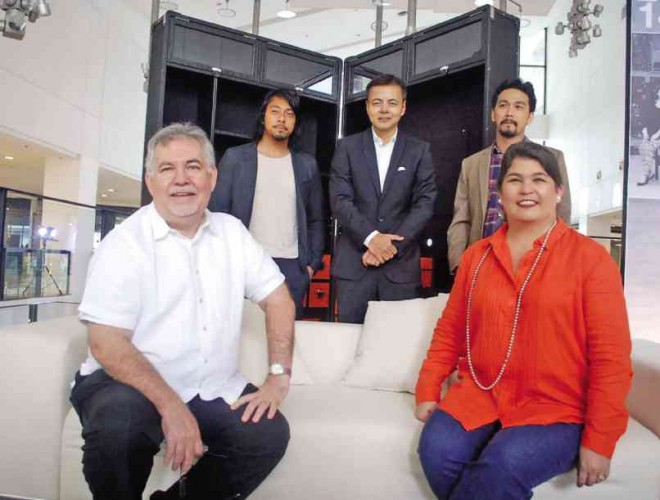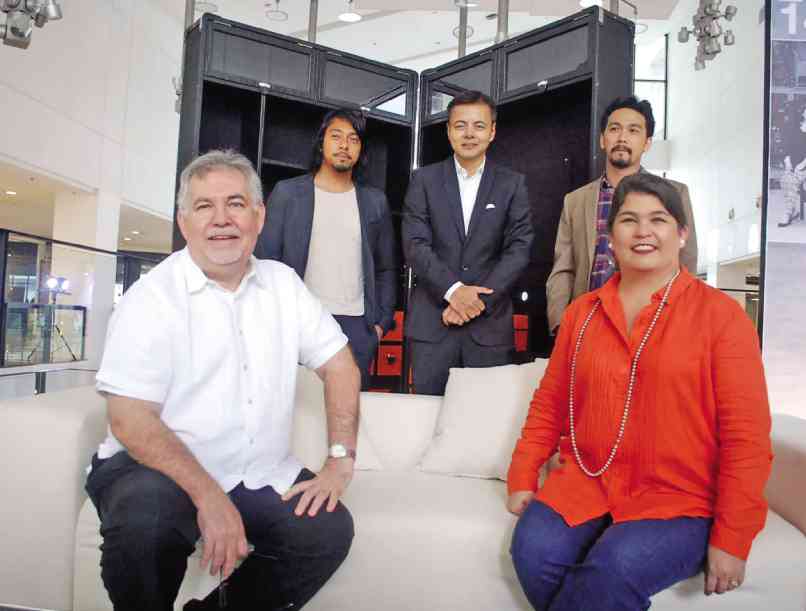
(Cebu).

Architect and interior designer J. Antonio Mendoza, creative director of the Philippine International Furniture Show (PIFS) 2014, appeared relaxed. He sat on a small white couch, feet slightly apart, and talked about the herculean task of developing synergy across an exhibition that highlights different regions and associations in the country.
The organizers—Cebu Furniture Industries Foundation Inc., the Chamber of Furniture Industries of the Phils. and the Pampanga Furniture Industries Foundation Inc.—have worked together previously; but PIFS 2014 marks the first time that they will collaborate on a unified theme. PIFS will be held March 14-17 at the SMX Convention Center, Pasay City.
“My direction will be geared toward what the show needs. And the goal is to sell. So I’m looking at this through the eyes of a consumer, buying for myself as opposed to buying for design direction,” Mendoza said.
He likened it to a Chanel fashion show where models wearing tons of pearls and gold chains and over-the-top hats will receive accolades from the crowd and the press. But when the clients visit the Chanel store, they still choose the classic little black dress.
“You will need people to come in, but in the end they are still conservative and will buy something ‘friendly.’ Practically every other award-winning chair doesn’t sell well. We need to tell the designers that we have to be able to sell their designs,” he said.
To achieve this goal, Mendoza visited different furniture factories and design companies in the Philippines and gave them design directions, looking for pieces he might buy himself and highlighting their strengths.
Different finishes
Forms and designs, he said, will always be the same, but the finish has changed. There was a time, Mendoza said, that bleached was all the rage. This year, he said, the market is geared toward pieces in ceruse finish, where an overlay of gray, black or white reveals the grain lines of the wood, rendering a nostalgic appeal.
Mendoza said that, according to Michelle Lamb, editorial director of Trend Curve and cofounder of Marketing Directions Inc., the furniture trend this year will lean toward browns, taupes and grays.
Bright colors will take a back seat while the safari look will be in vogue, such as horns and animal prints. Chrome will also disappear from the limelight as burnished gold and tarnished brass push forward.
“Filipinos like to fix their homes. It’s part of who we are—we are the Latins of Asia and that is reflected in our designs. There is passion in the curves and the arms of a beautiful chair. This is our edge over our Asian neighbors,” he said.
Featured designers
The creative genius of the Filipino will be highlighted in the PIFS 2014. It will showcase, among others, Cebuano furniture designer Vito Selma, who is known for his fluid, graceful take on wood.
“Wood has always been my partner. There is a warmth and memory that we all have with wood that I feel everyone can relate to. I think furniture has to spark a memory, and wood as a material does that,” Selma said in an e-mail.
The young designer, who earned his master’s degree in Industrial Design in 2012 at the Scuola Politecnica di Design in Milan, Italy, will show some of his early designs, including his first bed and first furniture piece for children.
Paisley is a chair with thin, stainless steel legs sporting a design inspired by a woman’s curves. A rope made of Philippine abaca is woven into a thousand loops to create its back, each loop hand-sewn into the chair.
“I think my work is birthed from meaningful moments in my life, and those memories resurrect as a piece of furniture. My collections are stories told in another form,” Selma said.
Another designer is British-Filipino Daniel Latorre Cruz, who likes to work with metal. Based in London, Cruz said he felt something was missing in his designs and thought he needed to come back home and be closer to his roots.
Textured surfaces
Today, Cruz is fascinated by capiz. “I like the opulence of capiz. There is no machine that can work with capiz. Everything is done by hand, from handpicking to cleaning. And I like that challenge,” he said.
Many of Cruz’s works involve a play of light. The opulence of capiz is perfectly suited to his taste. He derives a more abstract inspiration from bintana, the square capiz window panels. But they’re not just squares, he said, as they can be triangles and even 3D.
“It’s a stimulating material. It develops itself, it can manifest itself. This is what the modular capiz shells are all about—the play of light,” he said.
One piece that will be shown at PIFS 2014, “Against the Elements,” is an abstract shape from a felt tree. Cruz likes grains and textures. When it’s been eroded, there’s more depth to it, he said. He iodized the rust to see if the metal erodes faster. It’s a brave attempt, this ultra-modern take on metal.
Cruz likes to play with surface narratives as well. It moves away from traditional design, he said, and hopefully, in time, it will reveal the beautiful material behind it.
“It shows the fragility of the future—bleak and dark. It touches on the senses that we should act on something now. It’s modernism side by side with the present time. I like those glimpses of fragility,” he said.
Stanley Ruiz, a New York-based Filipino designer, will also be showing some of his collections. He set up his studio in the country last October, although he still spends half his time in the US.
Like Cruz, Ruiz works with metal. Some of his designs are inspired by Sol LeWitt, the 1960s American artist regarded as the founder of minimalism and conceptual art. Ruiz uses cubular modules and makes furniture pieces out of them.
“It is functional, but the consideration is more about the volume of the piece—the space—so it becomes more sculptural,” he said.
For Ruiz, the Filipinos’ edge lies in our sensibilities. For instance, our being improvisers allows us to put scraps together to create a whole design. Walk into a vulcanizing shop, he said, and you’ll find improvised tools and chairs made from tire tubes. It’s the jeepney aesthetic, but tapped in a more sophisticated, contemporary level.
“We can embrace what we already have and improve on it,” he said.
The PIFS will occupy close to 10,000 sq m showcasing more than 100 designers.









































